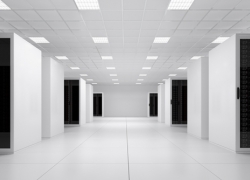What is a containment grade cabinet?
What is a containment grade cabinet?

The data center environment is a delicate ecosystem of power, cooling and computing equipment that needs to maintain high levels of functionality so that companies get the most out of their technology portfolios. Server life depends on the power coming into the facility, and power usage depends on the kinds of equipment running in the facility, including cooling machinery.
Cooling equipment is especially important. When servers get too warm, they might overheat and shut down unexpectedly. If they get too dry, static electricity could be generated, which might lead to fires. These events could have disastrous consequences for your customers and their equipment. For instance, when British Telecom's Belfast data center suffered a small fire earlier this year, all of its customers experienced an outage, despite the fact that none of the servers were harmed. According to ZDNet, the fire damaged the area where power and connectivity is delivered to the IT load.
Customer outages could mean bad business and harmed reputations. In the BT incident, Internet service provider Tibus, which uses equipment stored in the Belfast data center, claimed that there was harm done to two of their on-site power distribution units in the sudden restoration of power. It's no guarantee, but perhaps all of this could have been avoided with more careful monitoring and better cooling equipment.
Your business depends on the ecosystem of the data center running smoothly and coherently. Therefore, when it comes to cooling your server room, you don't want to cut corners.
Cooling containers
There are many different kinds of cooling systems. Data center managers can implement free air cooling, hydrocooling or different kinds of hot aisle and cold aisle strategies to make sure their facilities remain within the temperature and humidity ranges set by the American Society of Heating, Refrigeration and Air Conditioning Engineers. These standards dictate that data centers should maintain a temperature in the range of 59 degrees Fahrenheit to 89.6 degrees F and a relative humidity of 20 percent to 80 percent.
Containment grade cabinets offer the kind of cooling that managers need within their facilities so they can stay within these ranges. Containers are energy efficient and more reliable than other kinds of cooling systems, according to DatacenterDynamics contributor John Collins. A successful containment system achieves cooling through a two-step process. First the container traps the heat, and then expels it directly to the computer room air conditioner units. Then, the cooling equipment delivers chilled air directly to the rack or row.
Cost savings
Containers also offer significant ways to cut down on spending in the server room, something data center managers are always looking out for. Keeping servers at the desired temperature with increased efficiency has positive effects on how much money you're spending to cool your facilities. Legacy systems typically chill the air to a lower temperature in order to counteract the effects of recirculation. But containment-based cooling strategies can safely deliver air at a higher temperature due to the nature of the system, resulting in cost savings because, according to Collins, this can reduce CRAC unit power consumption by an average of 16 percent.
The containment grade cabinets offered by Geist can be applied to existing equipment, either in racks or rows. The rack-based containers are ideal for high-density cabinets; each rack is given one chimney through which the hot air is vented. Row containment allows multiple racks to share chimneys because of their lower density. Contact Geist today to find out how our containers can help your facility maintain its temperature and humidity so that your server equipment continues to function at the optimum level.



